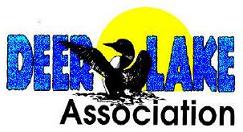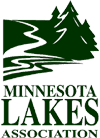

Deer Lake Association
A member of the Minnesota Lakes Association
| Spotlight |
|---|
|
|
WORKING TOGETHER, CITIZENS AND PUBLIC OFFICIALS CAN DO GREAT THINGS!
Report by Catherine McLynn, District 2 County Commissioner
In response to citizen demand four years ago on the campaign trail, Governor Tim Pawlenty established a Clean Water Cabinet as soon as he took office in 2003. He asked the Department of Natural Resources and other top-level agencies to coordinate a Clean Water Initiative.
During the first year citizens from five counties in the North Central Lakes area began working together in coordination with the DNR. They came to all agree that their communities were facing overwhelming pressure on their lakes. OVERDEVELOPMENT was a major threat. Members of the North Central Lakes Project, as it came to be called, began to work in five specific ways to help citizens and public officials cope with skyrocketing land prices and influx of people who wanted to build on waterfront property.
These five action areas were:
- Education: increasing the understanding of decision makers as to the impact their decisions have on the water resources.
- Conservation easements: providing better information and follow through for citizens who wished to leave a legacy of undeveloped lakeshore.
- Improved wastewater treatment options: more efficient individual septic systems or cluster systems, more effective management and upgrading, grant seeking.
- Revising the DNR Shoreland Standards.
- Providing technical assistance to the efforts of the above four groups.
Citizens with varied backgrounds worked with public officials from each of the five counties. Over the past three years, the work of these five groups has gained statewide attention and has made significant accomplishments in each of the five counties.
Specifically, the DNR Shoreland Standards were reviewed by a citizen's advisory committee that met every month in 2005. DNR provided the technical assistance. The citizens provided general direction and concept development. The Alternative Shoreland Standards were finished in December 2005.
These standards are now available to any government agency to adopt any part or all. Here in Itasca County, our ordinance actually provided many model elements of the Alternative Standards. Itasca County has already taken some positive steps to ensure the quality of our lakes. Other counties contributed good ideas that had worked well in their counties. Developers, realtors, fishing organizations, lake associations, building contractors, realtors and county commissioners all worked together to develop these Alternative Shoreland Standards. And many of these same representatives will be working to gain acceptance of the proposed standards by helping citizens understand the need for them.
Resort owners, for instance, have already asked their lobbyist and legislators to consider the parts that would be especially helpful to the "ma and pa" resorts. A bill was considered in the Tourism committee a few weeks ago. No action is expected this session, but interest is growing in the win/win solutions proposed. Other counties outside the North Central Lakes area are interested.
For instance, a buffer strip of natural vegetation is an effective means of preventing degradation of our lakes. Landowners who plant or allow regeneration of natural wildflowers, grasses, shrubs and trees increase their property values by reducing erosion from wave action, creating a barrier against unwanted geese on their lawns, provide themselves with more privacy and enjoy a variety of birds and wildlife. Screening and buffer strips allow people to enjoy their lakeside homes while mitigating the impact of development on the lake.
The Alternative Standards are tools for local officials to use. Local city and county officials are likely to be the first ones to use these tools and adopt them as ordinance. Itasca County adopted minor language changes last fall.
There are already many regulations that provide for public health, safety and welfare. Citizens accept regulations that prevent raw sewage or other poisons from polluting our lakes. Most understand the value of fishing regulations and enforcement that prevents poachers from stealing a public resource. Many support fair regulations that protect investments and property values.
While buffer strips are not yet required by ordinance, voluntary shoreland restoration by landowners is gaining in popularity. Excellent resources are available from county and state agencies to help landowners nurture native vegetation and enjoy the benefits. Local shoreland restoration businesses will contract to provide materials and do the work. There may be some financial assistance through local grant programs.
Lake association members are some of the best informed citizens because of their interest in learning and working together with their neighbors all of whom share the same front yard: the lake. Keep up the good work!
Catherine McLynn
Itasca County Commissioner Dist. 2